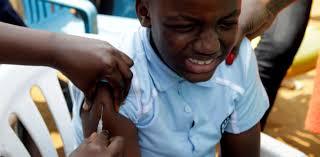A yellow fever outbreak in parts of Angola and the Democratic Republic of Congo (DRC) has led to more than 400 deaths since December 2015. The United Nations has embarked on a massive vaccination campaign with the aim of reaching 14 million people. Jacqueline Weyer, senior medical scientist at South Africa's National Institute of Communicable Diseases, explains the how and the why.
What makes this vaccination campaign different or unique?
This is one of the largest vaccination efforts to contain an ongoing outbreak ever undertaken.
The response to the yellow fever outbreak in Angola, which started in December 2015, has already been remarkable. More than 10 million people have been vaccinated in Luanda Province and other affected areas of the country since February. The effect is already evident. No new cases in the area were recorded in July and the first weeks of August.
But the outbreak has spread to the DRC. The current concern is for the evolving situation there as well as to prepare for possible flare ups of the disease in the coming rainy months.
The vaccination campaign has been expanded to increase coverage in Angola in the areas that border the DRC in particular, and then in the DRC's affected areas. These are regarded as high risk areas for the transmission of the virus.
What does it take logistically to vaccinate 14 million people?
The vaccination programme requires vaccines as well as health care workers to administer them safely. There are also many people working in the background co-ordinating the programmes and logisticians planning the campaigns. This ensures that the right people go to the right places with the right tools.
The World Health Organisation is co-ordinating more than 50 global partners to contribute to the vaccination drive on various levels. It includes 17.3 million syringes, 41,000 health workers and volunteers and 8 000 different vaccination locations. These are often in hard-to-reach rural settings in the DRC's capital Kinshasa and surrounds and along the Angola-DRC border.
Why is it being done now?
The yellow fever vaccination campaigns started in the Angolan capital Luanda soon after the outbreak was recognised earlier in 2016. Vaccination coverage in Angola has been variable but the intention was to target areas hit hardest by the first outbreak in the capital.
Cases of yellow fever have been reported in the DRC since March. Most were related to people who got the disease in Angola. But there is now mounting evidence that the virus has spread to mosquito populations in certain areas of the country and is being transmitted locally. That's why the current interventions are being mobilised.
Routine yellow fever vaccination is a part of national immunisation plans in yellow fever endemic countries. The outbreak highlights challenges in these programmes. This includes supplies of the vaccine: it takes a long time to manufacture and supplies are limited.
It also points to the fact that existing programmes need to be strengthened. This is to make sure that populations are protected from yellow fever and from other vaccine preventable disease.
People who get yellow fever may experience fever and general flu-like symptoms such as tiredness and body aches in their joints. They sometimes also complain of nausea, loss of appetite, vomiting and dizziness.
In some cases the infection will have a more serious effect on the body's organs. This can be fatal. For example, the liver may be severely affected and the person may become jaundiced or yellow in colour. This is where the disease gets its name from. Some people may also start bleeding. This includes blood in their stools or urine, or oozing from needle puncture sites.
Why the slow roll-out in Kinshasa?
This is related to a confluence of different factors. The first yellow fever cases associated with the Angola outbreak was reported in the DRC in March 2016. As case numbers started to increase and epidemiological data became available, it became apparent that the virus was not only being imported from Angola but was also being transmitted locally.
Another challenge has been acquiring adequate volumes of vaccine to vaccinate on a larger scale especially in the face of the massive and sudden uptake of vaccine in Luanda.
The vaccine cannot be rapidly produced and up-scaling of production is problematic and time consuming. Because of this the World Health Organisation has recommended a dose sparing approach known as fractional dosing. This requires the use of one-fifth of a dose of vaccine per vaccination.
The downside is that the fractioned dose allows for shorter term protection against the virus. The advantage is that the current outbreak can be managed and the immediate risk mitigated. But it will be important to provide a catch-up vaccination in the future to ensure long lasting immunity. This will also diminish the risk of future outbreaks. A full dose of the vaccine provides lifelong immunity.
Jacqueline Weyer, Senior Medical Scientist, National Institute for Communicable Diseases, University of Pretoria
This article was originally published on The Conversation. Read the original article.

